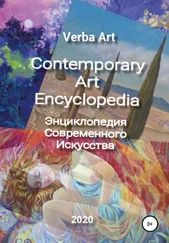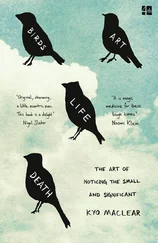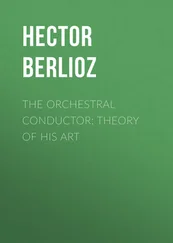In the first place then (so that I begin with the chief subject, and take things in order), the savages of America who live in Brazil, called the Tupinamba , whom I lived among and came to know for about a year, are not taller, fatter, or smaller in stature than we Europeans are; their bodies are neither monstrous nor prodigious with respect to ours. In fact, they are stronger, more robust and well filled‐out, more nimble, less subject to disease; there are almost none among them who are lame, one‐eyed, deformed, or disfigured. […]
They have the custom, which begins in the childhood of all the boys, of piercing the lower lip just above the chin; each of them usually wears in the hole a certain well‐polished bone, as white as ivory, shaped like one of those little pegs that we play with over here, that we use as tops to spin on a table. The pointed end sticks out about an inch, or two fingers’ width, and is held in place by a stop between the gums and the lip; they can remove it and put it back whenever they please. But they only wear this bodkin of white bone during their adolescence; when they are grown, and are called conomi‐ouassou (that is, big or tall boy), they replace it by mounting in the lip‐hole a green stone (a kind of false emerald), also held in place inside by a stop, which appears on the outside to be of the roundness and width of a testoon, with twice its thickness. There are some who wear a stone as long and round as a finger (I brought one such stone back to France) … What is more, I have seen men who, not content with merely wearing these green stones in their lips, also wore them in both cheeks, which they had likewise had pierced for the purpose. […]
Our Brazilians often paint their bodies in motley hues; but it is especially their custom to blacken their thighs and legs so thoroughly with the juice of a certain fruit, which they call genipap , that seeing them from a little distance, you would think they had donned the hose of a priest….
They also have crescent shaped pendants, more than half a foot long, made of very even‐textured bone, white as alabaster, which they name y‐aci , from their name for the moon; they wear them hung from the neck by a little cord made of cotton thread, swinging flat against the chest.
Similarly, they take innumerable little pieces of a seashell called vignol , and polish them for a long time on a piece of sandstone, until they are as thin, round, and smooth as a penny; these they pierce through the center and string onto cotton threads to make necklaces that they call boüre , which they like to wear twisted around their necks, as we do over here with gold chains … The savages also make these boüre of a certain kind of black wood, which is very well suited to this since it is almost as heavy and shiny as jet.
As for the head ornaments of our Tupinenquins, aside from the tonsure in the front and the hair hanging down in back, which I have mentioned, they bind and arrange wing feathers of rosy or red hues, or other colors, to make adornments for their foreheads somewhat resembling the real or false hair, called ‘rackets’ or ‘batwings,’ with which the ladies and young girls of France and of other countries over here have been decorating their heads. […]
If our Brazilians go off to war, or if … they ceremonially kill a prisoner in order to eat him, they want to be more gallantly adorned and to look more bold and valiant, and so they put on robes, headdresses, bracelets, and other ornaments of green, red and blue feathers, and of other various true and natural colors of extreme beauty. When these feathers have been mixed and combined, and neatly bound to each other with very small pieces of cane and cotton thread (there is no featherworker in France who could handle them better, nor arrange them more skillfully), you would judge that the clothes made of them were of a deep‐napped velvet. With the same workmanship they make the ornaments for their wooden swords and clubs, which, decorated and adorned with these feathers so well suited and fashioned to this use, are a marvelous sight.
IB8 Thomas Harriot (1560–1621) from A Briefe and True Report of the New Found Land of Virginia
Thomas Harriot was an Elizabethan scientist and mathematician who, after studying at Oxford, became a tutor to Sir Walter Raleigh. In this capacity he became involved in Raleigh’s attempts to establish an English colony in North America, following the example of the French and Spanish. This colony – which failed – was named ‘Virginia’ after Queen Elizabeth I. Its location on the island of Roanoke is to the south of present‐day Virginia, on the coast of North Carolina. Harriot’s work included navigation and map‐making, as well as the preparation of a report on the plants, animals and native inhabitants. In this, he worked with the artist John White ( fl . late 1540s–after 1593), who produced the first scientifically informed visual representations of the people of North America. Harriot’s text was first published in 1588 but achieved fame when it was republished two years later, along with White’s illustrations, as the first part of Theodor de Bry’s important multilingual series of volumes collectively titled America . Harriot’s job, at bottom, was to encourage further colonists, so he played down the difficulties involved in establishing a settlement, as well as the possibilities of conflict with the indigenous inhabitants. Nonetheless his work remains valuable as a detailed account of a now‐lost people, the Algonquians, describing their religious practices and aspects of their material culture ranging from crops and houses to clothes, dances, tattoos and hairstyles. The three paragraphs which conclude the present extracts accompanied illustrations by John White. The extracts are taken from A Briefe and True Report of the New Found Land of Virginia , with a new introduction by Paul Hulton, New York: Dover Publications Inc., 1972, pp. 24–7, and 46, 47 and 71. (This edition also contains White’s illustrations.)
Of the nature and manners of the people
It resteth I speak a word or two of the natural inhabitants, their natures and manners, leaving large discourse thereof until time more convenient hereafter. […]
They are people clothed with loose mantles made of deer skins, and aprons of the same round about their middles; all else naked; of such a difference of statures only as we in England; having no edge tools or weapons of iron or steel to offend us withal, neither know they how to make any: those weapons they have are only bows made of witch hazel, and arrows of reeds; flat‐edged truncheons also of wood about a yard long, neither have they anything to defend themselves but targets [shields] made of barks; and some armours made of sticks wickered together with thread.
Their towns are but small, and near the sea coast but few, some containing but 10 or 12 houses; some 20. The greatest that we have seen have been but of 30 houses: if they be walled it is only done with barks of trees made fast to stakes, or else with poles only fixed upright and close one by another.
Their houses are made of small poles made fast at the tops in round form after the manner as is used in many arbories in our gardens of England, in most towns covered with barks, and in some with artificial mats made of long rushes; from the tops of the houses down to the ground. […]
In respect of us they are a people poor, and for want of skill and judgement in the knowledge and use of our things, do esteem our trifles before things of greater value: Notwithstanding in their proper manner considering the want of such means we have, they seem very ingenious; For although they have no such tools, nor any such crafts, sciences and arts as we; yet in those things they do, they show excellency of wit. And by how much they upon due consideration shall find our manner of knowledges and crafts to exceed theirs in perfection, and speed for doing or execution, by so much the more is it probable that they should desire our friendship and love, and have the greater respect for pleasing and obeying us. Whereby may be hoped if means of good government be used, that they may in short time be brought to civility, and the embracing of true religion.
Читать дальше












